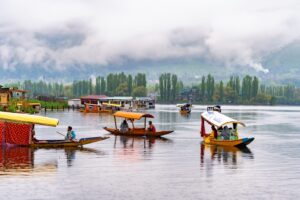The Serengeti National Park, a UNESCO World Heritage Site, is one of the most iconic safari destinations in the world. Located in northern Tanzania, this vast ecosystem spans over 14,750 square kilometers and is renowned for its breathtaking landscapes, diverse wildlife, and the legendary Great Migration. For wildlife enthusiasts, photographers, and nature lovers, Serengeti National Park tours offer an unforgettable adventure into the African wilderness.
The Magic of the Serengeti
Derived from the Maasai word “Siringet”, which means “endless plains,” the Serengeti truly lives up to its name. Rolling grasslands stretch as far as the eye can see, dotted with acacia trees and rocky outcrops known as kopjes. This terrain provides a perfect backdrop for observing Africa’s iconic wildlife, including the Big Five: lions, leopards, elephants, buffaloes, and rhinoceroses.
Beyond the Big Five, visitors can witness cheetahs sprinting across the plains, giraffes elegantly grazing, hippos wallowing in muddy rivers, and hyenas lurking in the shadows. The birdlife is equally spectacular, with over 500 species recorded, including ostriches, vultures, flamingos, and eagles.
The Great Migration – Nature’s Greatest Show
One of the main reasons travelers book Serengeti National Park tours is to witness the Great Migration, a natural phenomenon that sees over 1.5 million wildebeest, accompanied by hundreds of thousands of zebras and gazelles, travel in a circular route across the Serengeti and into Kenya’s Maasai Mara.
Driven by seasonal rains and the search for greener pastures, this epic journey spans nearly 1,800 miles. The migration is a cycle of life and death, where herds face dangerous river crossings, predators like crocodiles, lions, and hyenas, and the harsh elements of nature. Key moments such as the Grumeti River and Mara River crossings are dramatic spectacles that attract thousands of wildlife photographers and adventurers every year.
Types of Serengeti Safari Tours
There are several types of Serengeti National Park tours to suit different travel preferences and budgets:
1. Game Drives
These are the most common and accessible way to explore the Serengeti. Game drives typically take place in customized 4×4 vehicles with pop-up roofs, offering panoramic views. Morning and evening drives are ideal for wildlife viewing as animals are most active during these times.
2. Hot Air Balloon Safaris
For a unique and breathtaking perspective of the Serengeti, hot air balloon safaris are unmatched. Floating silently above the plains at dawn, tourists can watch herds of animals from above as the sun rises. This luxury experience often includes a champagne breakfast upon landing.
3. Walking Safaris
Accompanied by armed guides and park rangers, walking safaris allow tourists to connect with the Serengeti on foot. This immersive experience offers a closer look at the flora and smaller fauna, animal tracks, and ecosystems often missed during vehicle tours.
4. Photographic Safaris
Designed specifically for photographers, these tours are tailored to maximize photo opportunities with expert guides, custom vehicles, and strategic itineraries aligned with the best light and wildlife activity.
5. Mobile Camping Safaris
These safaris involve staying in mobile camps that move with the migration. It provides a raw and authentic experience, bringing travelers close to the action while still enjoying comfortable accommodations and warm hospitality.
Best Time to Visit the Serengeti
The Serengeti is a year-round destination, but the best time to visit depends on what you want to experience:
-
December to March: Calving season in the southern Serengeti. It’s a great time to witness newborn animals and predator action.
-
April to May: Wet season. Fewer tourists and lush landscapes, but some roads may be inaccessible.
-
June to July: River crossings and the start of the dry season. Ideal for seeing large herds and predator activity.
-
August to October: Great Migration moves north into the Maasai Mara but large numbers of animals remain in the northern Serengeti.
-
November: Short rains begin, migration moves south again.
Where to Stay in the Serengeti
Accommodations in the Serengeti cater to all tastes, from luxury lodges to budget-friendly campsites:
-
Luxury Lodges: Serengeti Serena Safari Lodge, Four Seasons Safari Lodge, Singita Grumeti.
-
Mid-range Tented Camps: Kati Kati Tented Camp, Serengeti Sopa Lodge.
-
Budget Campsites: Seronera Public Campsite, Nguchiro Campsite.
Mobile tented camps are also popular for those following the migration, offering a mix of comfort and proximity to nature.
Getting to the Serengeti
The Serengeti can be reached by air or road. The most common entry point is through Arusha, the gateway city to northern Tanzania’s safari circuit.
-
By Air: Several domestic flights from Arusha, Kilimanjaro International Airport, and Dar es Salaam operate to airstrips like Seronera, Grumeti, and Kogatende.
-
By Road: A scenic drive from Arusha to the Serengeti takes about 8 hours and often includes stops in the Ngorongoro Conservation Area or Lake Manyara National Park.
Conservation and Responsible Tourism
While tourism supports local economies and conservation efforts, it’s essential to travel responsibly. Reputable tour operators follow strict eco-guidelines, ensure minimal environmental impact, and employ local guides. Travelers should avoid littering, respect animal space, and refrain from loud behavior that can disturb wildlife.
Many safari camps and lodges support community development programs, including schools, health clinics, and conservation initiatives. By choosing eco-conscious tours and accommodations, visitors can contribute positively to the Serengeti’s future.
Final Thoughts
A Serengeti National Park tour is not just a vacation—it’s a journey into one of the most remarkable ecosystems on Earth. Whether you’re chasing the thunder of hooves during the migration, spotting a pride of lions under the golden sun, or marveling at the endless skies from a hot air balloon, the Serengeti offers memories that last a lifetime.
Plan your adventure wisely, choose ethical operators, and prepare to be transformed by the wild beauty and raw authenticity of Africa’s greatest safari destination.



